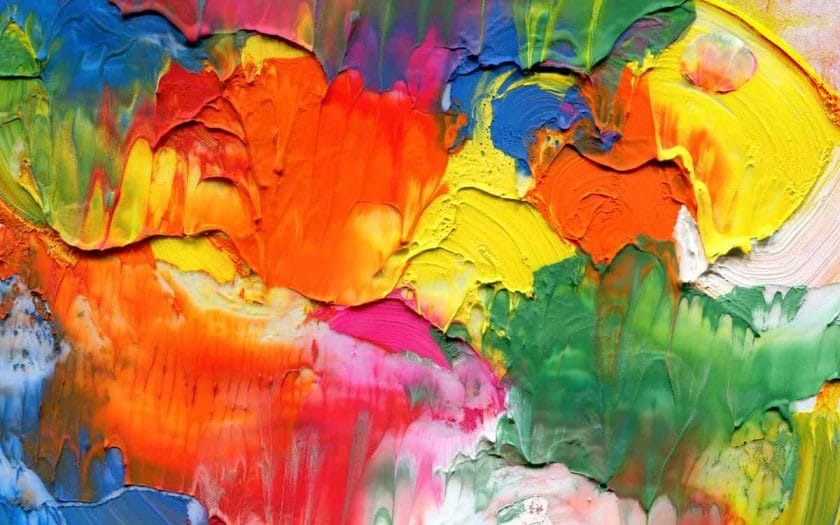Yes, you can mix oil and acrylic paints but this depends on the type of oil paint you’ll be working with. If you’ll be using traditional oil paint, mixing oil and acrylic paints is not a safe and/or ideal practice. And I don’t recommend that you do so in any of your major art projects.
But if you can lay your hands on water-soluble oil paints, it’s possible to mix these with acrylic paints without any issue. Water-soluble oil paints have been chemically modified to mix seamlessly with acrylic paints or any other water-based paints.

Unfortunately, water-soluble oil paints are not as common as traditional oil paints, and finding one can be a difficult task.
Also, not all acrylic paints are mixable with water-soluble oil paints – only about 25% of acrylic paints are mixable. There are chances that the acrylic paints you intend to use aren’t mixable with water-soluble oil paints.
Unless you can get water-soluble oil paints and mixable acrylic paints, I won’t advise you to mix oil and acrylic paints in your next art projects.
Result of Mixing Acrylic Paint and Oil Paint
As I said earlier, oil paints and acrylic paints can be mixed but this shouldn’t be used for any serious or major art projects. But you can decide to mix oil paints with acrylic paints for experimental purposes or if you want to play with some mixed-media painting. If you would like to know what mixing oil paint and acrylic paint looks like, then read on.
Naturally, oil and water don’t blend because of their chemical composition – oil separates from water because it’s hydrophobic. This same attribute applies to oil paints (oil-based) and acrylic paints (water-based). Mixing oil paints and acrylic paints is more or less mixing oil and water.
Therefore, when you mix acrylic paint and oil paint and use it for painting, the oil paint will separate from the acrylic paint due to their different densities.
Being hydrophobic and less dense than acrylic paint, the oil paint will move above and won’t blend properly with the acrylic paint below.
Also, acrylic paints dry faster than oil paints. As a result, you may encounter smearing or odd dripping. This also means that you’ve got to give your mixed media enough time to dry completely. Even at that, your painting will likely bubble, crack, flake, peel, streak, lose its quality, and/or break down over time.
Can you now see that mixing acrylic paint and oil paint is not ideal for great and realistic artwork? Considering that oil paint and its supplies are more expensive than acrylic paint and its supplies, I won’t advise that you waste resources on “worthless” artworks.
How to Effectively Paint with Acrylic and Oil Paint?
That you shouldn’t mix oil and acrylic paints doesn’t mean that you can’t use both paints in your next art projects.
You can effectively paint with acrylic and oil paint as long as you apply one of the paints before the other. As a norm, you should only apply oil paints over acrylic paints but not the other way around.
Here is a step-by-step guide to effectively paint with both acrylic and oil paint:
Applying Oil Paints Over Acrylic Paints
- Apply gesso on the canvas to prepare/prime its surface for the painting. This will allow the paint to stick well to the surface of the canvas. After priming, wait for some time for the gesso to dry completely.
- If necessary; sand the surface of the canvas lightly with fine-grit sandpaper.
- Apply the acrylic paint in a thin, even layer to prevent lumps underneath the oil paint. You may apply the acrylic paint in multiple coats to increase its depth but ensure that you don’t make the acrylic layer thick. Otherwise, the oil paint will not stick well to the acrylic paint because of the plasticizer in the acrylic paint.
- Don’t apply oil paint on wet acrylic paint. Wait for some hours for the acrylic paint to dry completely before applying the oil paint.
- After the acrylic paint has dried off completely, you can then proceed to apply the oil paint on top of it. Most times, oil paints applied over acrylic paints may become brittle and crack with time. To prevent this; slightly sand the surface of the dried acrylic paint and prime it with a layer of gesso before applying the oil paint.
Applying Acrylic Paint Over Oil Paint
As I said earlier, you shouldn’t apply acrylic colors on surfaces with oil paints. This is because acrylic paint won’t adhere properly to any surface with oil paint.
If you still go ahead and apply acrylic paint over oil paint, the acrylic paint will flake off with time as it’ll dry in a plastic-like film.
Also, the oil paint on the background can stain the acrylic colors. However, you’ll be able to apply acrylic paints over oil paints by doing the following:
- Apply oil paint on the background.
- Allow enough time for the oil paint to dry completely.
- After drying, sand the surface of the oil paint slightly and apply a coat of gesso on it. Wait for the gesso to dry completely before applying acrylic paint(s).
While this method would work, the ideal way is to use acrylic paints as an underpainting medium for oil paints.
Conclusion
Mixing acrylic and oil paints is not ideal if you want your artwork to look professional and last through the test of time.
That is why you should use one paint before applying the other. The general rule here is to apply oil paint over acrylic paint but not the other way around.
By following the above-listed steps, you’ll get the best out of your acrylic and oil paints. And don’t forget to wait for each layer of paint (especially oil-based paints) to dry completely before applying another paint to it. Have fun!
